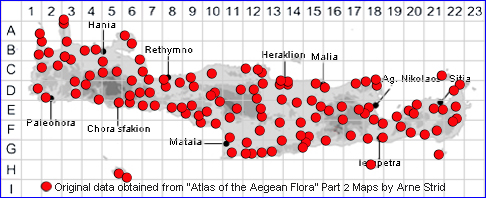

SPECIES DESCRIPTION
SCANDIX PECTEN-VENERIS
Family and Genus:- See- UMBELLIFERAE
Common Names:- Shepard's needle
Homotypic Synonyms:- Chaerophyllum pecten-veneris, Myrrhis pecten-
veneris, Wylia pecten-veneris
Meaning:- Scandix (Gr) Ancient name for sheherd's needle.
Pecten-veneris (L) Venus' comb, a name used by the Roman
naturalist and philosopher Pliny.
General description:- Very variable, erect or spreading, almost hairless annual.
Stem:-
1) Generally 15-35 cm tall.
Leaves:-
1) 2- or 3-pinnate into linear-lanceolate segments 80 mm long at most. ultimate
segments 2-5 x 0.5-1.5 mm. with toothed, hard edges, apiculate.
Flowers:-
1) 3-8 in each umbellule, on very short pedicels.
2) Umbels, white, opposite the leaves, with 1-3 subequal petals some of the outer
flowers usually, to 2-3 mm long.
3) Rays, 8-30 mm, ± incrassate in fruit.
4) Bracts, absent or few.
a) bractlets, usually 5. conspicuous and exceeding the pedicels, often reflexed,
margins membranous, ciliate, untoothed or few toothed.
5) Styles, 1-2.5 mm, 2-4 times as long as the stylopodium.
Fruit:-
1) Achenes, 30-50 mm. linear-subulate, beak, flattened. 3-4 times as long as the
seed-bearing part.
Key features:-
1) Plant, generally 15-35 cm tall.
2) Fruit, 30-50 mm.
3) Beak, at least twice as long as the seed-bearing part
4) Bractlets, conspicuous, exceeding the pedicels.
5) Styles, 2-4 times as long as stylopodium.
Habitat:- Usually a weed of cultivated and fallow fields in semi-natural habitats, (dry
open shrubby vegetation, gorges, etc.). 0-1600 m.
Distribution:- Common throughout Greece. - Most of Europe, Mediterranean area
and SW Asia; introduced in North America and temperate areas of the S
hemisphere. Widespread and common on Crete.
Flowering time:- Mar-June.
Photos by:- Steve Lenton
SCANDIX MACRORHYNCHA
Homotypic Synonyms:- Scandix pecten-veneris subsp. hispanica
Meaning:- Macrorhyncha (Gr) With a large beak
A member of the Scandix. pecten-veneris complex, recognized on the following
combination of characters:-
1) Bractlets, inconspicuous, equalling the pedicels, entire soon withering.
2) Beak of the fruit, 2-3 times as long as the seed-bearing part, only slightly
compressed.
3) Styles, 0.4-0.8 mm, less than twice as long as the stylopodium.
Habitat:- Rocky, stony and gravelly slopes,pastures, mainly over limestone, 500-
1600
Distribution:- Mountains from SE Peloponnisos (Parnonas) to the N borders, one
record from Kefallinia. - S Europe and Anatolia.Mountains from SE Peloponnisos
(Parnonas) to the N borders, one record from Kefallinia. - S Europe and Anatolia.
Rare on Crete Known from a few scattered location in the three main massifs
Flowering time:- April to mid-June.
SCANDIX BRACHYCARPA
Homotypic Synonyms:- Scandix pecten-veneris subsp. brachycarpa
Meaning:- Brachycarpa (Gr) Short-fruited.
A dwarf mountain plant, very similar to Scandix macrorhyncha, but:-
1) Fruit, short (c. 15 mm), with the beak less than twice as long as the seed-
bearing part.
2) Styles, very short (c. 0.5 mm).
Habitat:- Dolines and stony mountain slopes,1600-2100 m, on limestone.
Distribution:- A species of somewhat uncertain status, maybe restricted to
mountains of Sicily and Crete; doubtfuily recorded from Mt Parnassos. Rare on
Crete Known from a few location in the Lefka Ori and Dikti massifs. (see map).
Flowering time:- April to mid-June.

~~~~~~~~~~~~~~~~~~~~~~~~~~~~~~~~~~~~~~~~~~~~~~~~~~~~
~~~~~~~~~~~~~~~~~~~~~~~~~~~~~~~~~~~~~~~~~~~~~~~~~~~~


